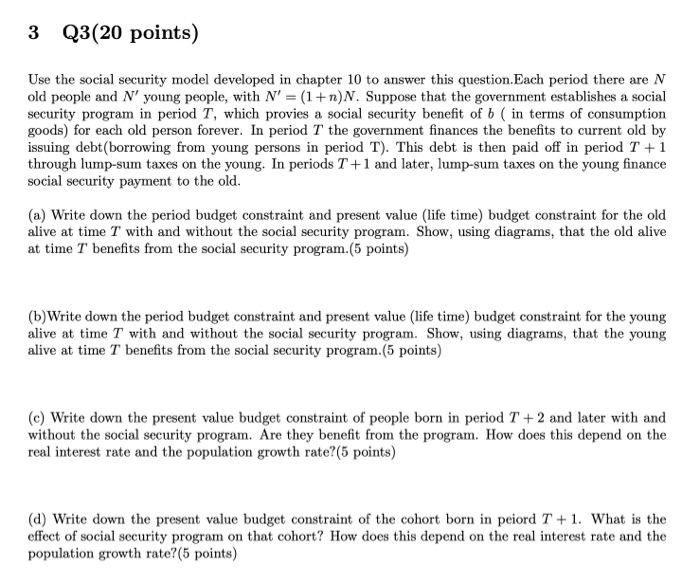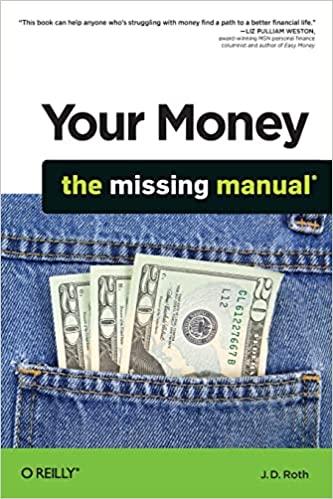3 Q3(20 points) Use the social security model developed in chapter 10 to answer this question. Each period there are N old people and N' young people, with N' = (1 +n)N. Suppose that the government establishes a social security program in period T, which provies a social security benefit of b ( in terms of consumption goods) for each old person forever. In period T the government finances the benefits to current old by issuing debt(borrowing from young persons in period T). This debt is then paid off in period T +1 through lump-sum taxes on the young. In periods T +1 and later, lump-sum taxes on the young finance social security payment to the old. (a) Write down the period budget constraint and present value (life time) budget constraint for the old alive at time T with and without the social security program. Show, using diagrams, that the old alive at time T benefits from the social security program.(5 points) (b)Write down the period budget constraint and present value (life time) budget constraint for the young alive at time T with and without the social security program. Show, using diagrams, that the young alive at time T benefits from the social security program.(5 points) (e) Write down the present value budget constraint of people born in period T+2 and later with and without the social security program. Are they benefit from the program. How does this depend on the real interest rate and the population growth rate?(5 points) (a) Write down the present value budget constraint of the cohort born in peiord T +1. What is the effect of social security program on that cohort? How does this depend on the real interest rate and the population growth rate?(5 points) 3 Q3(20 points) Use the social security model developed in chapter 10 to answer this question. Each period there are N old people and N' young people, with N' = (1 +n)N. Suppose that the government establishes a social security program in period T, which provies a social security benefit of b ( in terms of consumption goods) for each old person forever. In period T the government finances the benefits to current old by issuing debt(borrowing from young persons in period T). This debt is then paid off in period T +1 through lump-sum taxes on the young. In periods T +1 and later, lump-sum taxes on the young finance social security payment to the old. (a) Write down the period budget constraint and present value (life time) budget constraint for the old alive at time T with and without the social security program. Show, using diagrams, that the old alive at time T benefits from the social security program.(5 points) (b)Write down the period budget constraint and present value (life time) budget constraint for the young alive at time T with and without the social security program. Show, using diagrams, that the young alive at time T benefits from the social security program.(5 points) (e) Write down the present value budget constraint of people born in period T+2 and later with and without the social security program. Are they benefit from the program. How does this depend on the real interest rate and the population growth rate?(5 points) (a) Write down the present value budget constraint of the cohort born in peiord T +1. What is the effect of social security program on that cohort? How does this depend on the real interest rate and the population growth rate?(5 points)







